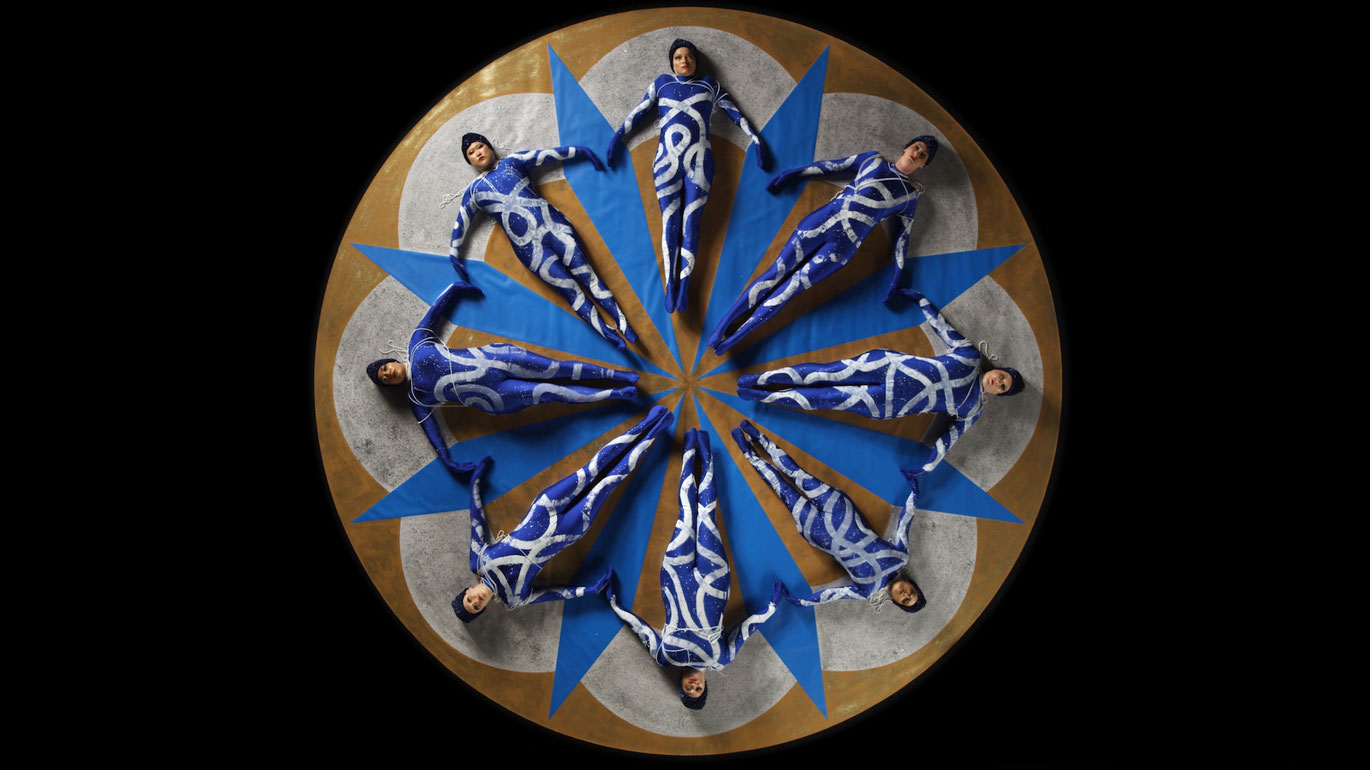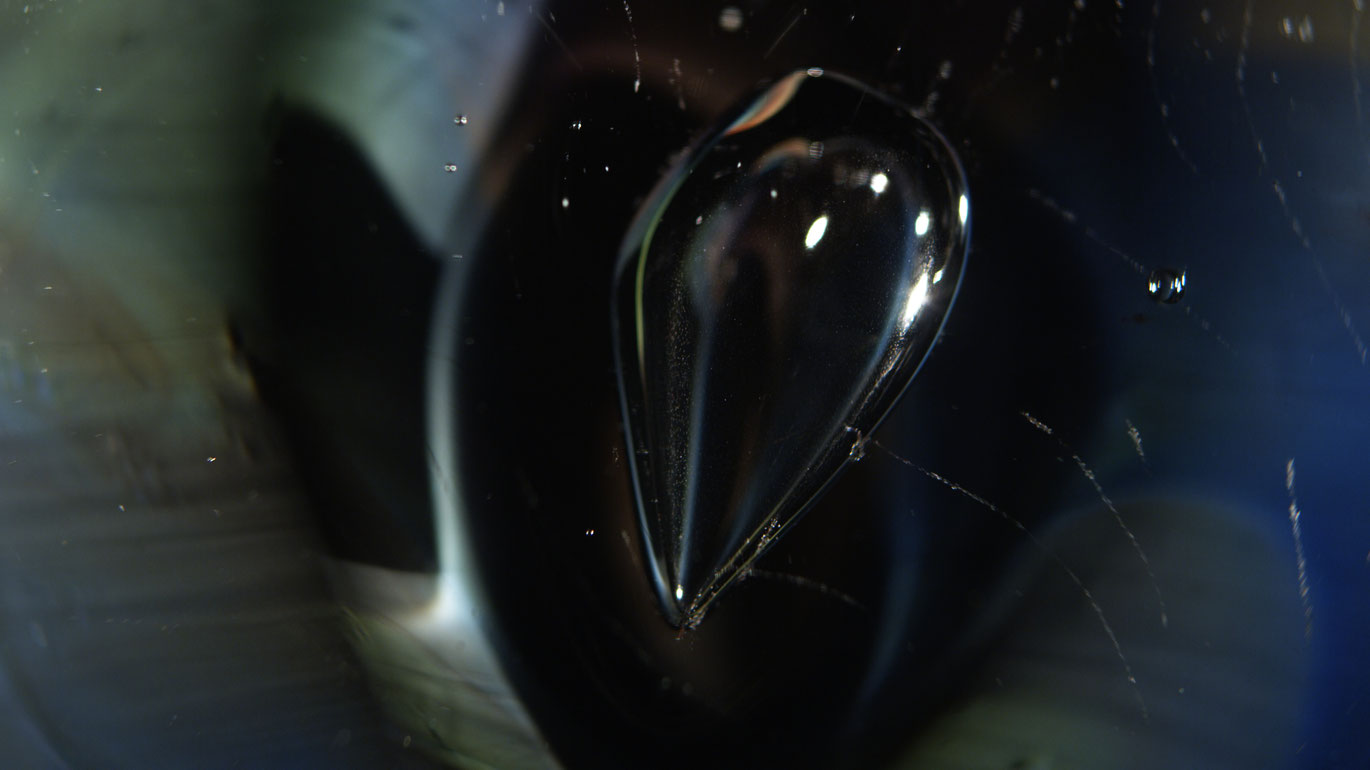Pomp
Katrina Daschner is able to draw on a repertoire of motifs for the eighth part of her queer series, loosely based on Arthur Schnitzler's Dream Story. A rosette window, glass, water drops, silk and leather – various materials lend their qualities to reveal a tactile "camera eye". A choreography of surprising architectural details accompanies colors closely conjuring the sense of a dream – midnight blue and gold – as the performers enter the arena. This time around they perform classic variety numbers, but with a characteristic Daschner twist. A collective golden shower not only pours into crystal champagne flutes but also assumes the form of golden glitter running down the performers' legs. On the other hand, a dance of legs reminiscent of Busby Berkeley motifs obscures any sense of proportion and perspectival clarity. Do the dancers find themselves in the dome of a building that has walls painted with illusionist architectonic elements of galloping horses? Or have they landed on the former surgical table of an architectonically idiosyncratic anatomical operation theater for animals? Is it all imagined, dreamt, or is it reality?
Nothing is as it seems. Nothing is firmly established when it comes to this location reminiscent of variety productions, circus and theater. Reflections, spotlights, and opaque glass fascinate, while at same time leaving the gaze to ricochet. The alchemy of textiles and substances pairs the lust of unveiling with the apparent superficiality of surfaces. Daschner's Pomp constitutes a musical without music, this time referring most directly to cinema and film history, as well as suppressed roots of experimental film in the culture industry.
(Claudia Slanar)
Translation: Eve Heller
Pomp
2020
Austria
8 min


